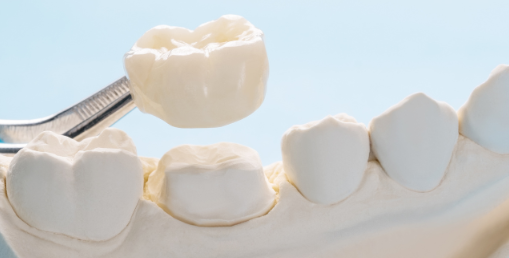"How long will they last?" is almost the first question every patient considering porcelain veneers asks their doctor. Based on the latest clinical data and opinions from multiple authoritative organizations, the average lifespan of porcelain veneers is roughly 8–15 years, with some high-quality cases exceeding 20 years. However, this isn't a fixed shelf life; it's an open-ended question, the answer determined by the following five variables.

I. Five Key Variables Determining Lifespan
1. Material Grade
• Standard Metal Abutments: 8–12 years, with potential for gingival staining.
• Precious Metal Abutments: 10–15 years, with improved biocompatibility and reduced corrosion risk.
• All-Ceramic (Zirconium Oxide/Glass-Ceramic): 10–15 years or even longer, with optimal aesthetics and tissue compatibility.
2. Doctor's Craftsmanship
The gap between the crown edge and the natural tooth should be ≤2 μm. Excessive gaps can lead to bacterial infiltration and decay of the abutment, directly reducing lifespan.
3. Abutment Tooth Condition
If the abutment teeth themselves have caries, periapical periodontitis, or occlusal abnormalities, even the most sophisticated porcelain veneers will struggle to last.
4. Personal Oral Hygiene
Effective brushing and flossing twice daily, plus cleaning every six months, can reduce the risk of failure by 30%.
5. Lifestyle Habits
• Biting hard objects, cracking sunflower seeds, and opening bottle caps—the most common causes of porcelain fracture.
• Nighttime bruxism: A nighttime bite pad is essential, distributing bite pressure by over 50%.
II. How to Use Porcelain Veneers for 20 Years? — "3x3" Maintenance Plan
1. Three Daily Activities
① Use a soft-bristled toothbrush and a low-abrasive toothpaste; ② Floss the base of the bridge; ③ Use a fluoride mouthwash to strengthen the abutment teeth.
2. Self-examination every three months
① Check for black lines on the crown margins; ② Continuous sensitivity to hot and cold stimuli; ③ Does floss suddenly become stuck (indicating edge cracking)? If any of these signs occur, consult a doctor immediately.
3. Three professional examinations annually
① Panoramic radiographs or CBCT to examine the root apex of the abutment teeth; ② Periodontal probing to measure gingival pocket depth; ③ Articulation paper to detect high points.
III. Three Signs of "Retirement" of Porcelain Veneers
1. Repeated bleeding from the crown margins and bad breath—indicates edge seal failure or periodontal inflammation.
2. A "click" followed by persistent pain when chewing—the porcelain layer may be cracking and compressing the gums.
3. Obvious loosening of the crown—indicates abutment tooth decay or deterioration of the adhesive.
If any of these signs occur, do not delay; early removal and re-implantation can avoid abutment tooth extraction.
IV. Common Questions Answered at Once
Q: If a porcelain veneer breaks, can I just replace the porcelain surface without replacing the metal base?
A: No. Chipping of the porcelain layer usually requires complete removal and re-fabrication, so daily chipping prevention is extremely important.
Q: It's said online that a veneer should be replaced every 5 years. Is that true?
A: Most insurance companies in the US use a 5-year "payout period," not a physical lifespan; the median clinical estimate is 10–15 years.
Q: Do all-ceramic veneers necessarily last longer than porcelain veneers?
A: The general trend is yes, but only if the craftsmanship and maintenance are equally good; otherwise, even zirconia veneers can chip after 3 years.
Conclusion
Porcelain veneers are not a one-time transaction; they're a long-term partnership involving both the doctor and the patient. By choosing the right materials, finding a good doctor, ensuring proper cleaning, and avoiding bad habits, you can easily extend the lifespan of a porcelain veneer from an average of 10 years to an exceptional 20 years.